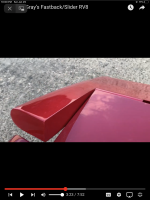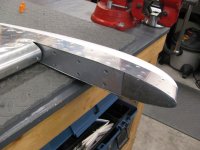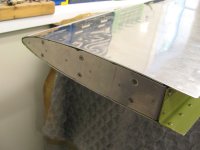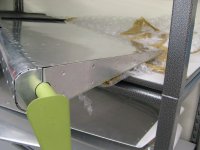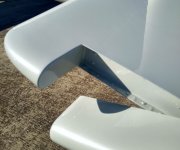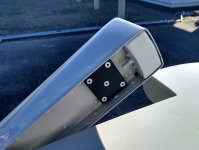It definitely looks nice, and you can’t argue with the beauty that Rick has accomplished with his many award winning airplanes, but I don’t understand the aerodynamic benefit. In fact I don’t think there is any, and maybe it’s a detriment, aerodynamically. These gaps aren’t seeing straight line relative wind like your wings, or your wingtips. They are seeing “spilled lift” that leaks from the high pressure side of the airfoil to the low side. It’s either positive lift on your wings, or download lift on your tail, but the argument is the same. You are using energy to create this lift (up or down), and allowing that lift to easily squirt unimpeded through that gap, destroys some of the lift. That tail needs to provide a certain amount of download, and if some of that download slips away, then it has to provide a little more. This results in an increase in induced drag over and above what would have been required, had you not created an improved pathway for the lift leakage. Does it amount to anything measurable? Probably not, but to think that this will be more aerodynamic and make you go faster doesn’t make sense to me. It’s heavier, and if you don’t build it correctly (not just foam and filler) it WILL crack eventually and look worse than it would have if you had done nothing. Make it look pretty, but realize, there’s no benefit outside of cosmetics.



